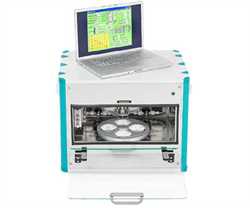
Product Name: Biolab PORLA Stability Analyzer
Brand: Biolab
Product Code: PORLA
Tags: Biolab
Biolab PORLA
Biolab Analyzer
Biolab Stability
Biolab PORLA Stability
Stability Analyzer
Stability Analyzer
Biolab Stability Analyzer
Stability
Biolab PORLA Analyzer
Biolab Analyzer
Biolab PORLA Stability
Biolab PORLA Stability Analyzer
Stability Analyzer
PORLA Stability Analyzer
Biolab Stability Analyzer
Biolab Stability Analyzer
PORLA Stability
Biolab PORLA Analyzer
Stability Analyzer
Are you interested in the product Biolab PORLA Stability Analyzer from manufacturer Biolab with code PORLA? Contact us now and get offer. Imtek Engineering, the fastest and most reliable industrial equipment supplier in the world, will offer you the best offer!
Get Offer With E-Mail: info@im-tek.com
Get a offer for Biolab PORLA Stability Analyzer from our live support team now!
Porla Analyser can analyse heavy and crude oils that cover extremely wide viscosity and asphaltene content ranges from very high to very low. Very often, low asphaltene content oils cause blending and process problems. In addition, the new Porla has an analysis programme for blending the parameter of asphaltene free oils and blend components. Furthermore, Porla is perfectly suited to the analysis of bitumen. Porla will report a comprehensive set of stability and compatibility parameters such as P-value, Pa, Po, FR5/1(toluene/xylene equivalent), FRmax, In and Sbn all in one operation. As a result of the exceptionally wide applicability area, Porla will result in the biggest benefits and profitability increases to end-users. The unique detector technology of New Generation Porla, based on the reflection of asphaltene sensitive light, facilitates the applying of a low dilution of oil samples, resulting in the accurate analysis of oils containing as little as 0.1% asphaltene and sometimes even lower. Other particles besides asphaltenes, such as coke, do not disturb the Porla analysis. Therefore, the removal of coke prior to analysis is not necessary. New Generation Porla is a very useful and practical tool for planning and monitoring the blending of feedstocks/crude oils, heavy oil blending (from cracking bottoms and solvents), the blending of bitumen and optimisation of cracking units (e.g. thermal and hydrocracking) of oil refineries. In addition, New Generation Porla can also be used for monitoring visbreaking processes and the dilution of tar sands with light ends in the production fields of tar sand crudes. Besides its unique performance in analysing the stability and compatibility parameters of low asphaltene content oils, the New Generation Porla Analyser includes an automatic procedure for analysing the ExxonMobil heavy and crude oil blending model parameter Sbn (solubility blending number) of asphaltene free oils and blend components. We have made the New Generation Porla operation easy for end-users. Operation of the analysis programme is very simple and easy. The programme gives default values to the operator to prepare the stock solution, and there is no need to prepare more than one stock solution from oil to be analysed and an aromatic solvent. We offer strong application development support for Porla end-users when commissioning the analyser at a customer site/laboratory. Our expert will remain at the customer’s laboratory for 4-5 days to give user-training and run a wide range of oil samples with the operator, which can be analysed in the laboratory. He will also give instructions concerning sample preparation and the running parameters of these oils. As a result of this service, the end-user has ready applications for different oil types and an understanding on how to built applications for possible new oil types. This service will ensure a smooth start for new Porla end-users. Sometimes, some new oils to be analysed might seem challenging or the analysis results may look a bit peculiar. For those situations, we have a special service for our Porla users. The only thing the Porla end-user needs to do is send a sample to our application laboratory in Finland. We will analyse the sample free of charge in our laboratory, report the results and give instructions on how the oil sample can be prepared and successfully analysed in the future. The only cost that the end-user must pay is the transportation of the sample to our laboratory.